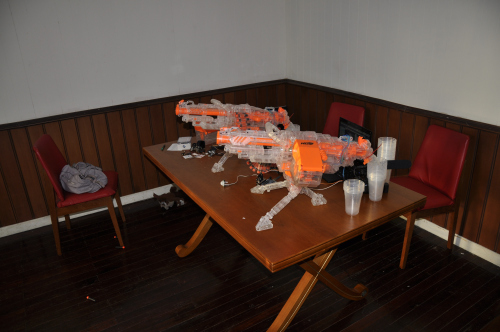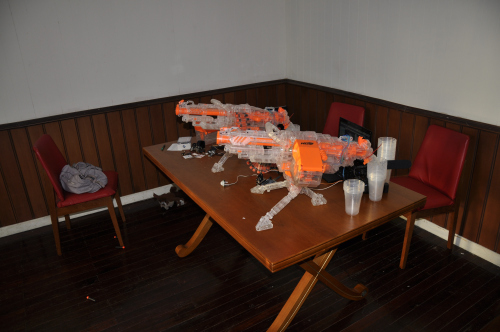If you’ve ever wanted to shoot someone with a Nerf gun, but just didn’t have the energy to get off the couch, this hack may be for you. It’s also a good way to ward off zombies if another apocalypse, Mayan or otherwise, is on the horizon.
Although the effects are very cool, as seen in the video after the break, the method for making this setup was quite simple. The requirements for this project were that the gun could not be permanently modified, and everything had to fire automatically. These restrictions may have contributed to the simplicity of the design as many of us would start breaking things before we had to.
Instead of some elaborate hack, the trigger was tied back in the firing position at all times. A relay was then used to interrupt the power supply to the mechanism allowing an Arduino equipped with an infrared sensor to automatically control the firing. The setup is explained after the break, but skip to around 1:55 if you’d rather just see the guns in action. Continue reading “Nerf Sentry Gun For The Apocalypse”














